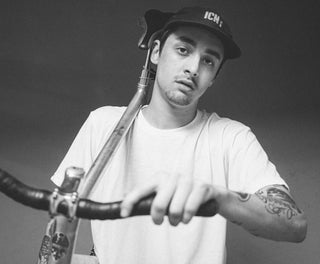Necessity is the mother of invention, and for ICNY‘s 23-year-old founder Michael Cherman, visibility was his necessity. After being struck by a car cycling home one night, Mike was left wondering, “How can I prevent this?” His answer: Increase visibility. What started out as a solution for his own personal safety soon grew into ICNY Reflective-Wear. Using reflective materials and incorporating them sleekly into functional apparel that can transition between active and casual was his solution. It started with socks and a few T-shirts and has now become a full line. With a few seasons behind him, it is safe to say, being seen isn’t as much of a problem.
Mike had been doing freelance design work in New York for a while until he realized he wasn’t happy working on projects that weren’t his own. He says, “It didn’t give me fulfillment getting a check from Nike if I did an advertising campaign or a T-shirt design. That money only goes so far, it only pays so many rent checks and I needed something that I could wake up to every day and expect that I could grow and develop.” In our interview below, Mike talks about how he started ICNY, working with a small team, shameless self-promotion, why be believes success is “earned and not given,” and how he transitioned out of the grind of freelancing for others to reserving work full-time for his own brand.
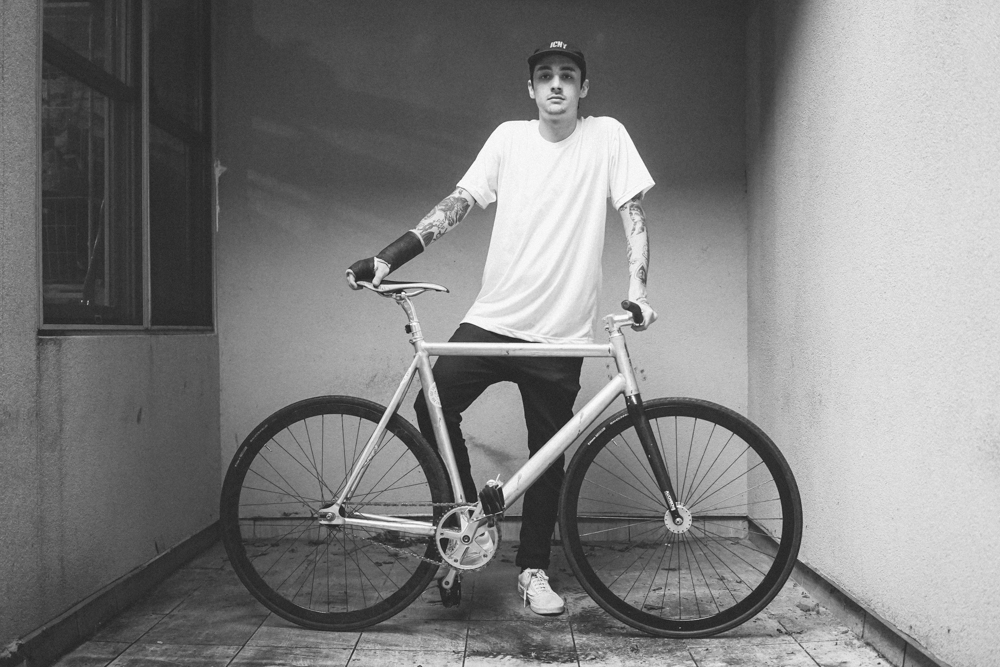
On that guerrilla campaign you did trying to get hired by Jeff Staple that got you arrested – what other bold stunts have you pulled to reach a goal in your life?
I would say that I haven’t really pulled any stunts to reach a goal in my life… One funny story was when I was in high school, I had a small T-shirt brand and I essentially made this shirt and brought it to school. I had 50 pieces and I ended up selling them all in one day and what ended up happening is the kids whose face I used for the graphic of the shirt didn’t get one. A fight broke out in the quad of my high school – this kid ended up getting his face bloodied, I ended up in the principle’s office at the end of the day and was expelled from school for making those shirts. This was something that wound up being one of my first claims to fame for making clothing and it was my first time feeling [like I made] something that was semi-impactful and caused a commotion… That was kind of my first stint in really believing that I could start a clothing company or do something creative.
What are some of your favorite brands right now that you feel are breaking the mold and opening new niches like ICNY?
I feel like brands like ISAORA are doing some amazing things, just with the ability to remove all your apparel from different retail stores and moving it all online, making innovative product that’s sold directly to consumers. It’s kind of a new idea in this world, to really be able to capitalize on a business and do in a big way, while making high quality, expensive apparel. It’s pretty amazing and they’re doing the most functional stuff out there, so to me, I have a lot of respect for any brand that pushes the limit of what function is and making stuff that you can wear everyday that really works for you and isn’t just “a good look.”
ICNY x Without Walls from Without Walls on Vimeo.
What other technical design materials like 3M are you hoping to use in the future?
Really, at the end of the day, we’re just trying to use any technical material: sweat-wicking, moisture release, any type of waterproof, any type of water repellant. You know, we’re really trying to explore any type of material that’s going to make you more comfortable riding, running, and just living your everyday life in an urban jungle. The idea that you’re constantly moving, walking, running – that you need to be able to feel good and comfortable with what you’re wearing – is something we are emphasizing going forward. And as we grow and gain a little bit of speed, we’re really just trying to make stuff that is more technical and is really something you can wear for multiple years and isn’t going to be within the now of trends and street… [We’re] really trying to separate ourselves from the street world and make more performance-style gear, ’cause really at the end of the day, we want people who ride, run, and cycle to want to wear the stuff, and have people in the street world to want to aspire to have that. It’s like the guys in New York you see wearing Nike Sportswear smoking cigarettes in the corner, it’s really funny ’cause at the end of the day, they just want to look the part, but don’t really want to live the life.
Can you share the story behind the name ICNY?
The story behind ICNY – it really just stems from riding in New York everyday and the idea “I See New York.” So truly, just visibility. It speaks to the function of what we do, and really at the end of the day, you need to be seen in New York if you’re on a bike or running. If not, you’re putting yourself into a situation of danger without a doubt.
With a team of only 4 people, how do you multitask design, marketing, testing, etc.?
With such a small team, there are a lot disadvantages as far as not being able to get a lot done and being held up by the size. But with less people, you can turn around things a lot faster – you have less cooks in the kitchen. Really at the end of the day, from my experience working at Nike, it was amazing to see the problems that came from having too many people involved… And the beauty that came from having very few opinions and people makes it really easy with taking that step with making things quickly and hitting the market fast. Really with this new industry and the internet, it’s required for you to be able to turn around things fast and hit market before everyone else because there are people watching and they can do it as fast as you can.
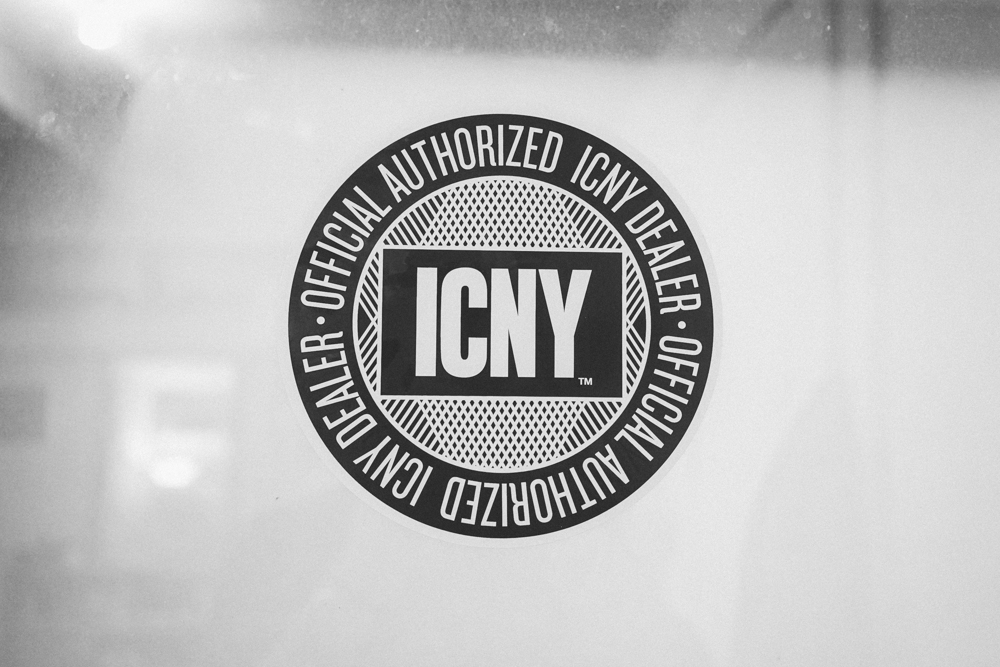
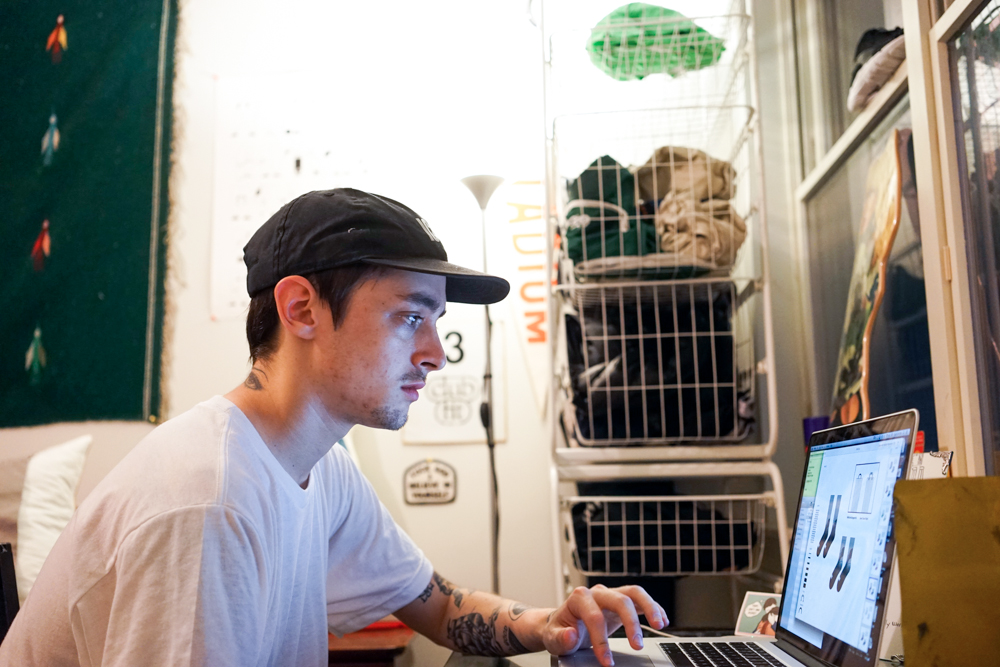
You said in your interview with Hypebeast, “It’s really about how much time you put into it. It’s earned not given out there.” When did you realize this in your career path? And how did you make that initial transition out of the grind of working for people to working on something that is your own?
I was originally attending Parsons after I left high school. I spent one year at Parsons and [interned] at a store on the Lower Eastside called Prohibit. I was working out there on basically doing any freelance work out there I could get, I was on Craigslist soliciting work, it got the point were I needed a job. So I did that Jeff Staple poster campaign, ended up getting arrested, and from there a good friend of mine, Emeka Obi wrote an article on the Hypebeast blog he had called “Shameless Self Promotion.” People noticed it and I ended up getting an interview at Nike.
From that job I was then able to work my way up. I started out as a basic T-shirt maker – someone who worked on graphics – and every single year I was getting to the next step. I was there for about three and a half years. By the end of the time, I was one of the lead graphic designers in the space and I had learned all the machines that were in that space, from embroidering to heat press to laser machine, direct to garment printing… being immersed in all these different things gave me a knowledge of quick-turn apparel that you couldn’t really learn anywhere. It kind of opened up my eyes to the ability that you could make anything anytime and you’re not really held back by minimums or by someone telling you, “Oh, you need to order a certain amount,” – whatever; all those things kind of make it hard to start your own brand.
So for me when that place closed, I actually ended up getting some of the machines that they had in the space. And from purchasing those machines I was able to start the business. Literally, with one machine I was able to do everything. And it was actually the most empowering thing ever because I ended up joining up with a studio in Brooklyn called LQQK Studio and from there really establishing the business.
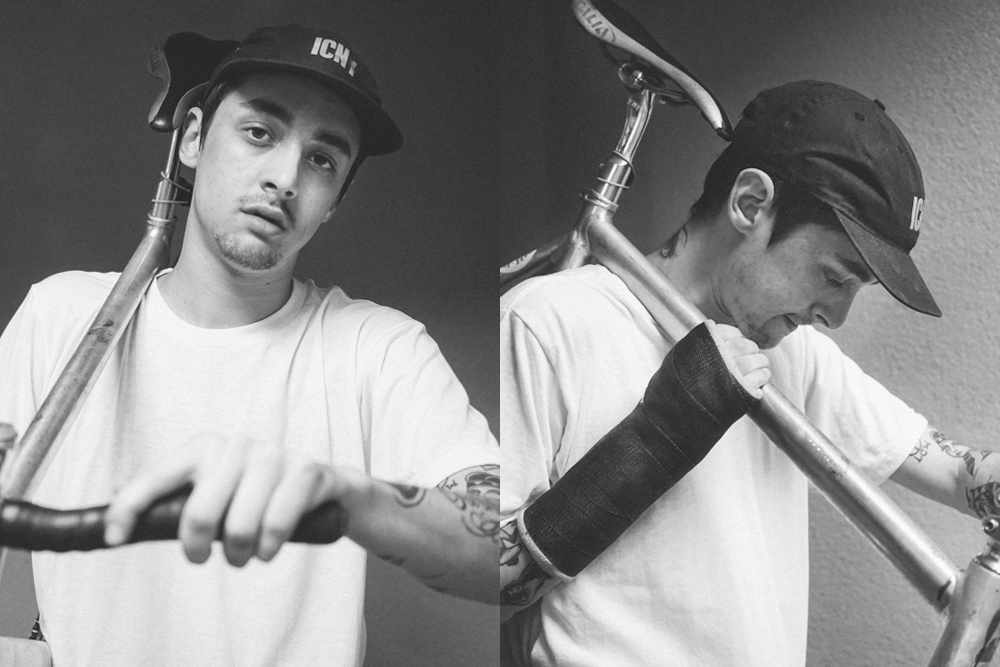
The bike that Mike had the initial accident on. The blood strains on it are still visible from the last accident he had, hence the cast and his current inability to type more than a few words.
I was doing freelance to pay for the brand. Any kind of stuff for Sony, Nike, any kind of these brands to pay the bills. By working with them, I was able to then realize I needed to start the brand and take that next step into doing it for real. I realized I needed to stop doing this freelance stuff and just focus 100%. And when I really did, that was the first time the brand started taking a step towards something positive. When orders started coming in, cooler designs started coming out because we need someone 24/7 behind the brand. If you don’t have someone who is full time working on a brand, then you’re always going to have something half-assed. And I think it’s really important to have someone who is driving it at all times.
It was at a point where I just realized that I wasn’t happy producing for other people; it didn’t give me fulfillment getting a check from Nike if I did an advertising campaign or a T-shirt design. That money only goes so far, it only pays so many rent checks and I needed something that I could wake up every day and expect that I could grow and develop.
So to me, that’s why it’s earned and not given. I went through so much shit just to get here and it’s just in the beginning stages. Just being 23 and having this thing work so far has been an amazing thing to watch happen, but it’s going to be amazing to watch what could happen in 5 years – 10 years. It’s always a constant learning process. You’re never gonna have a written story to how you do this and I never really even knew what I was doing in the first place. You figure it out along the way and that was kind of how this all worked.
I think I read that you said it took three jobs for you to figure out that you didn’t want to do that shit anymore.
Yeah man, I’ve also worked in taco shops and I’ve worked at Jamba Juice. I’ve worked in food spots – my dad owns a little coffee spot. But it never felt right, you know? When you can make money doing something you’re happy doing, there’s nothing more beautiful in the world.
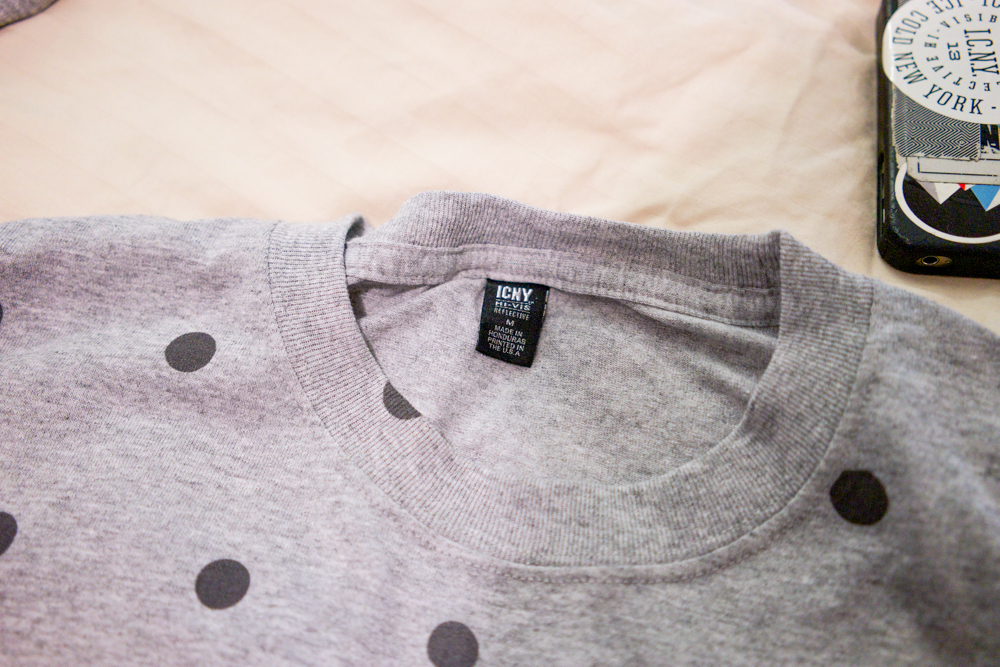
Yeah, it’s not work anymore.
Exactly man, and I think that’s what’s beautiful about working here is just… you can joke around during the day, you can play some loud music. These guys DJ sometimes, they do No Wave radio. They just have a good time while they’re also printing, creating, making things – there’s ways to have fun. And if you can find something that makes you happy at the end of the day, then you’re gonna be good. No matter how much money you make. At the end of the day if you’re happy doing it, it’s not work.
Yeah, I remember I had this thing where I always tell people, “Look, in life you don’t always know what it is you want but you learn what it is you don’t want.”
Exactly. There’s a lot of things I know I don’t want, so it’s finding those things. I’m very focused on what I want to do. I don’t go out and drink, I don’t go out and party; it’s all about – wake up every day and do this work then go home, go to sleep, and do it again.
[Founder of LQQK Studios Alex Dondero]: You don’t have friends.
Yeah. [laughs] Other than not having friends it’s been a really good ride.
I’m sure that’s not the case.
[Laughs] He’s only a half-friend.
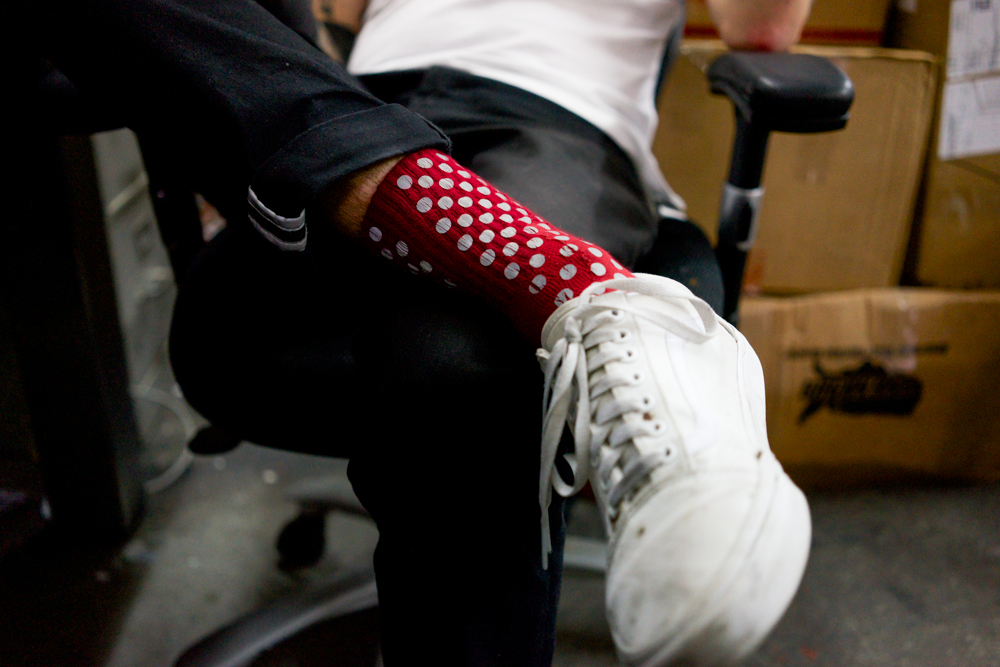
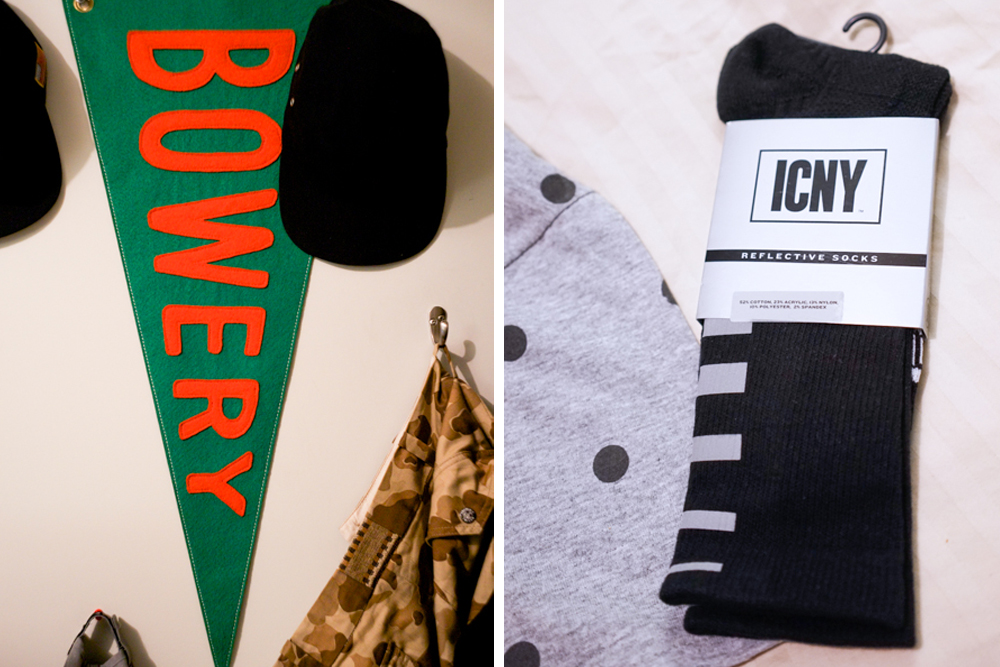
In your interview with Breaks, you mentioned wanting to build your brand more first before you go head-first into more collaborations. Can you expand on what you think are the most important things to do when building your brand look/feel/voice, especially coming from your design background?
So we definitely want to build our brand way more before we jump into more collaborations and do more things with different people, although, we will be working with other brands and other retailers. It’s generally for a goal or for some purpose of creating something, pushing the limit, pushing the design element, trying to see what we can do with reflective is kind of what we’re doing.
Where we just did a collaboration with Jason Markk and we just did something new where it was the thinnest and lightest reflective we’ve ever put onto a sock, which also comes with a fully stretchable reflective. It’s something very new and we can’t wait to introduce this into the market where it won’t really crack anymore. You’ll have a little bit of breakage over time, but the sock is gonna be so much more resilient and so much of a better product that it’s really gonna blow away consumers who did have it before. Because reflective is not meant to be put onto ribbing… at the end of the day, reflective is made out of millions of glass beads and that is the anti-stretch. And so we’re constantly working to develop and build our product so that when we do work with these people and we do build with these brands that we’re making the highest-level product possible.
I think that’s the most important thing out there because you can go make a bunch of crap, people will buy it, and you may have a brand for a few years but if you make some really great product, no matter what happens with that brand, that product will stand the test of time.
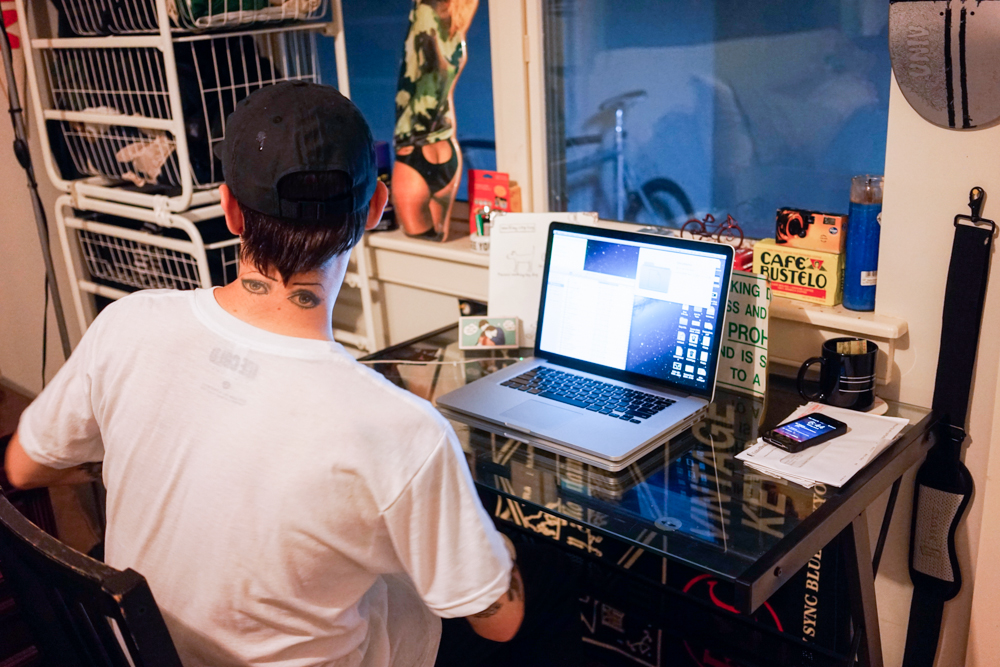
Visibility.
So that’s what we’re really trying to focus on: making great stuff. There’s plenty of people out there making reflective wear. There’s plenty of safety proper reflective wear, there’s plenty of fashion brands in reflective wear, as well as sports brands. So it’s really about us carving our own niche and creating something that’s truly special in the market. And our socks are truly something that’s special. Because when you ride a bike your legs are constantly moving and because reflective works off direct light, it’s essentially creating a constant strobe while you’re riding or running. Your legs are coming in and out of line of that sight and you’re essentially creating a strobe for anyone who’s in a car or anyone who’s in any kind of situation to inflict harm onto you; you could fully keep yourself aware to them.
That’s what’s so beautiful about this product so that’s why I’m truly inspired to create this stuff. For us, creating this brand is a necessity. And so the look, feel, and voice kind of come from that necessity and come from this community of the New York running and cycling world; people who just do it every day. It’s part of your daily life, you do it to get to work, you do it to get home, and it’s beyond living in other places where you’re generally riding a bike or you want to go on a long ride or go to the beach; here it’s a necessity. And for me it’s something that I need in my every day life and that’s why we do this.

Yeah, it’s definitely needed. I know 3M is pretty much what you use. Have they ever contacted you and been like, “Hey, we’re interested in how you’re using this stuff?”
So I think an interesting point I want to make is that 3M is a brand that makes paper, plastics, different materials, carbon materials, different chemicals, fuckin’ signage – they do everything. They do Scotch Brand Tape. They do a lot of stuff. 3M is not reflective; 3M is a brand that makes reflective material. So what’s really interesting and something people don’t realize – especially in this theater community it’s very much not known – is that there’s millions of people, or plenty of companies out there that making reflective stuff. From inks, transfers, fucking fabrics – so it’s amazing when people don’t really realize that. So it’s kind of like Kleenex – or just that brand recognition where people don’t realize that they’re just calling something something; they’re just kind of creating that. And unfortunately reflective costs three times more to use than it does other stuff – like any off-brand ink. So I can go use those off-brand inks but I can’t call 3M technically.
What the biggest issue is in street wear and clothing in general is that people will use that name without actually using it. So you pay license fees and you pay extra money just to use that product – and it’s like saying Gore-Tex, it’s like saying any of those types of things – you’re using a premium product here. So for us it’s very tough because we’re trying to make the highest-level quality product out there and there’s people out there claiming to do it but they’re not using the best product available. It’s something we’re trying to differentiate ourselves with and educate the customer. Because that’s biggest problem: the customer’s truly not educated. So it’s partly our responsibility to do that because until we educate that customer then they’re really not gonna know what it is.
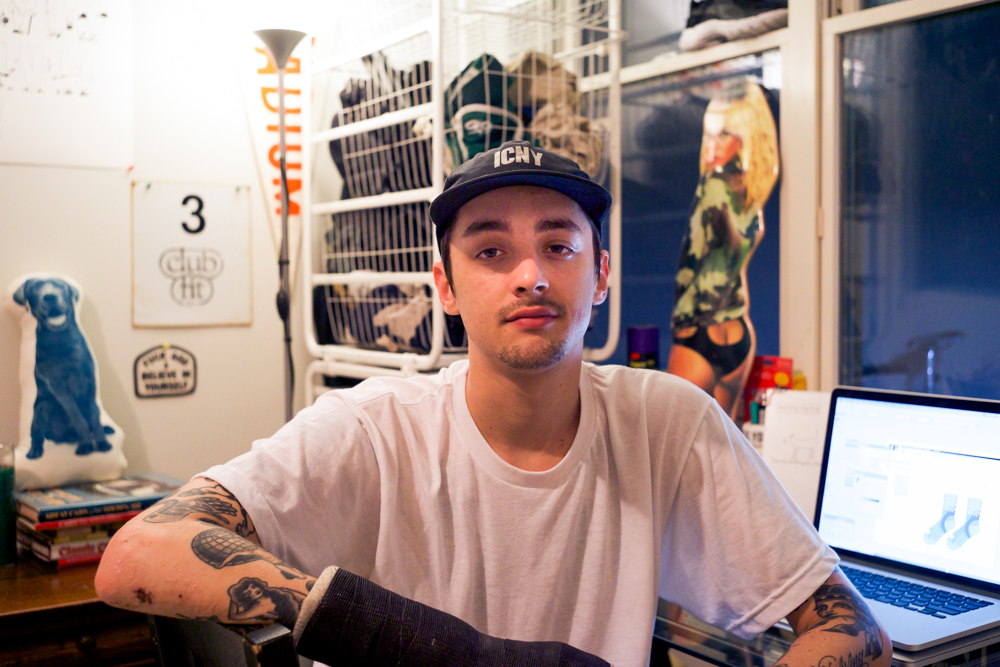
Before the iPhone, you never really had a direct correlation to having a pair of sneakers on and taking a flash photo of it and seeing it reflect. Flip phones maybe a little bit but the quality was never there. Now it’s gotten to a point where you have that instant recognition of social media and all these different things and so when you go into a clothing store and you take a picture of a garment, you see this whole other life to it; a whole other level. And so there’s something that’s kind of cool with reflective wear: there’s two different lives to it. When you go out at night it has this whole different other level. It’s kind of like glow in the dark ink or any type of color changing inks; anything like that, it’s gonna be something whole new to people. And it’s like this whole new discovery when you find out that your product shines or does something new for you at night. I think it’s like getting a jacket with multiple pockets – I love having inside pockets on my jacket. I feel like it’s the same thing. More features the better. If something’s gonna do multiple things for you, that’s the best.
And that’s why fashion meets function: that’s what we’re all about. Looking good while still having stuff that works for you.
::

